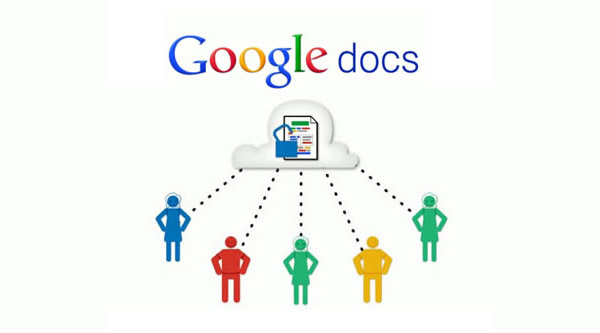Introduction
In the world today, we are faced with
a vast number of educational technologies such as the internet, computers,
mobile devices, just to name a few. After reading this research paper, you will
obtain information about three (3) modern forms of educational technologies
which include Online Learning, Communication Tools and Collaborative Tools. I
trust that the information will be clear and informative and will make an
impact on your knowledge towards the education field for teaching.
Online
Learning
Online
learning, sometimes referred to as e-learning, is a form of distance education.
Online courses are delivered over the Internet and can be accessed from a
computer with a Web browser (ex. Internet Explorer).
Online
courses can be
·
Asynchronous
- delivered at your convenience any time or place
·
Synchronous
- students are online at a specified time
Examples of Online Learning include:
Properties of Online Learning Environment
An online learning environment can be
described as a virtual classroom which offers students and teachers
opportunities to interact with instructional materials, interactions and events
normally encountered in a real classroom setting. The properties of a typical
online learning environment may include:
1) Resources
2) Activities (Discussion forum, Chat, Quiz, Assignment,
Journal)
3) Email
Characteristics of Online Learning
·
Computer tutorials and online learning
activities- According to
Salimpoor et al. (2010), he stated that computer tutorials and online learning
activities have the capacity to make students learn at their own convenience in
terms of pace and level and have a positive impact on the retention of old
knowledge and acquisition of new knowledge.
·
Use of multimedia elements, simulations and
manipulatives- McKethan et al.,
(2003) stated that a number of studies discovered that incorporating media
components may contribute to knowledge retention but how these media components
are integrated does play a key role in students' learning, e.g. when they are
interactive.
·
Online quizzes- Grant and Courtoreille, (2007) mentioned that an
ideal online learning education provides online quizzes at the end of each unit
and gives feedback on the results
·
Medium of delivery–According to Shih (2007 and Kerfoot (2008), Online
learning can be delivered through a mobile environment, the World Wide Web or
via email; research has shown no considerable differences in learning resulting
from the medium of delivery. An ideal online learning education is accessible
anywhere, 24/7, as long as mobile and/or internet technologies are available.
·
Distance learning - Bernard et al., (2004) stated thatDistance-learning
situations enhance the learning experience significantly when digital resources
such as computer-mediated interactions are available. An ideal online learning
education enables distance learning through learning activities that are
interactive.
·
Cooperative learning - Integration of cooperative learning permits
people to enjoy the group's collective knowledge and gain knowledge from others
in order to enhance the overall learning experience. An ideal online learning
education enables and supports cooperative learning.(Bernero, 2000)
Strengths and Weaknesses of Online Learning
There are many reasons why online
programs have become a popular form of distance learning in higher education
today.
Strengths
-
The online environment offers
unprecedented opportunities for people who would otherwise have limited access
to education, as well as a new paradigm for educators in which dynamic courses
of the highest quality can be developed. Some strengths include:
- Accessible anyplace
- Anytime or pace
- Student Centered
- Creative Teaching
- Access to Resources
Weaknesses
-
While online programs have
significant strengths and offer unprecedented accessibility to quality
education, there are weaknesses inherent in the use of this medium that can
pose potential threats to the success of any online program. Some weaknesses
include:
- The Technology
- The Online Environment
- The Facilitator
- The Students
- The Curriculum
Online Learning, in today’s setting,
can be seen as a possibility of putting into great use in our local schools. In
fact, personally, I have been engaged in an online learning experience for this
present course. Some of the strengths and features mentioned above are actually
what I noticed and I will recommend such to anyone. Online learning is a still
a relatively young industry, promising a rich future of breakthroughs. New
models of teaching are already emerging that have the potential to take online
learning to even greater accomplishments.
Communication
Tools
The evolution of
communication technology provides online educators and learners the opportunity
to participate in exciting curricula that are meaningful and purposeful for
today’s online learners (Chen, 2011).
To ensure that active communication
and collaboration takes place in a virtual learning environment, it is
important for educators to consider and determine which communication
technologies best suit their needs and the needs of their students.
Communication technologies have the
potential to engage learners while also providing motivation and support for
both online teaching and learning. But it is crucial for students to become
engaged in the learning process. Connecting and communicating with their peers
and teachers via communication technologies is vital to support the learning
process, the mastery of knowledge, and the skills taught online. Students use
technology to communicate, thus they are more likely and comfortable to participate
in a technology-driven environment (Smyth, 2011).
Examples of Communication Tools
include:
Connect
and collaborate with others on a Google Hangout. This tool is a great way to
promote peer-to-peer and peer-to-teacher communication.
Skype
is a great way for teachers to connect with students, parents, and fellow
educators. This free communication technology allows participation in voice
calls, video-calls, and messaging, and it can be used to connect with
classrooms from all parts of the world.
Educators
can create a chat room for discussions, facilitate question and answer
sessions, post comments, etc., which can take place both asynchronously and
synchronously.
Strengths and Weaknesses of Communication Tools
Communicating:
these
tools allow students to communicate with each other through email, chat rooms,
discussion boards, etc., to share information efficiently. This allows for an
extensive community of learners all working towards a specific goal.
Collaborative
Tools
Collaborative learning is essentially
people working together to solve a problem, create a product, or derive meaning
from a body of material. A central question or problem serves to organize and
drive activities, and encourage application, analysis, and synthesis of course
material. While the landscape of technology that can be used to support central
activities of collaborative learning is vast and varied, it is often lumped
together under a single label: "collaboration tools."
Younger learners have grown up in
more collaborative learning environments and the transition may be easier for
them. The nice effect of collaboration is the disbursement of control from the
teacher to the learners. Benefit: effective, models real life. Drawback: hard
to manage.
Examples of Collaborative Tools
include:
This
tool allow you to upload your files, edit anytime from anywhere, choose who can
access your documents share and collaborate online.
used
to make this space create simple web pages that groups, friends, and families
can edit together.
allows an individual
to express themselves by starting a blog.
Place
instant messaging inside a visual workspace. Use it as a collaboration
environment, a meeting room, a personal web-based whiteboard, or something
entirely new.
Properties
of Collaborative Tools
According to Lomas, Burke, and Page
(2008) they mentioned that while communication is often an integral feature of
collaboration tools, it is not the only feature. Any tool that allows
interaction on a shared resource has the potential to be a collaboration tool.
Determining the factors that increase the likelihood that a tool can attract a critical
mass of users may shed light on what facilitates effective collaboration. A
natural interface with interactions based on existing communication norms is
particularly valuable. Such properties include:
Strong
Communication Capability:
Perhaps
through video, audio, or simple text, the most important feature of a collaboration
tool is its ability to facilitate communication and interaction between
participants.
Easy-to-Understand
Interface:
The
interface of the tool should be easy and intuitive to navigate, perhaps
emulating an existing tool or an aspect of the physical world. A user’s ability
to simply pick up, adapt to, and use a tool considerably diminishes extensive training
and supervision needs. For example, each successive generation of an IM tool builds
on the previous one, making it easy for users to figure out how to use it. Incremental
changes and version features allow for an evolution of the tools.
Capability
and Expectation of Collaboration:
To
encourage input from participants, a collaboration tool should make it clear
that input is expected and will elicit a response. For example, it should be
clear whether and when it is acceptable to collaborate in this space. Is
collaboration expected? Does the tool support taking turns or sharing of “airtime”
in this space? An online presentation can be an ideal tool for collaboration,
for example, but only if it is clear to the audience that they should be
responding to the presentation and interacting with participants instead of
passively watching a webcast.
Strengths and Weaknesses of Collaborative Tools
Strengths:
·
Knowledge building
·
Communities
·
Student to student
·
Time on task
·
Ideal for online environment
·
Supplements other media
Weaknesses:
·
Takes time – not ideal for short
lessons
·
Difficult to do
·
Change required of student and
instructor
In today’s society, students use
technology in natural ways that allow them to do what they want: communicate
with anyone they want, in the time and space that suits them best. Easily
accessible and user friendly, collaboration tools allow students to explore,
share, engage, and connect with people and content in meaningful ways that help
them learn. I hereby agree on this fact because I was able to achieve and
experience such collaborative tool in a programme called Schoology.
Conclusion
Interaction through the use of
communication technologies is vital to a quality education because it allows
teachers to promote active online learners, and that engagement translates to
better learning outcomes and greater satisfaction with online learning, both
for student and educator.
Resources
Bernard, R. M., P. C. Abrami, Y. Lou, E. Borokhovski, A. Wade,
L. Wozney, P. A. Wallet, M.Fiset,
and B. Huang. (2004). How
does distance education compare with classroom instruction? A
meta-analysis of the empirical literature.Review of Educational Research 74 (3): 379–439.
Bernero,
J. (2000). Motivating
students in math using cooperative learning. (ERIC Document Reproduction Service No.ED446 999).
Chen, L. (2011). Improving teachers’ teaching
with communication technology. Journal of Educational
Technology Systems, 40(1), 35-43
Cyprien
Lomas, Michael Burke, and Carie L. Page (2008).Education Learning Initiative:Collaborative Tools. Retrieved on April 28th 2015
from: http://net.educause.edu/ir/library/pdf/eli3020.pdf
Grant, L. K., and M. Courtoreille. (2007). Comparison of fixed-item and response-sensitive versions
of an online tutorial.PsychologicalRecord
57 (2): 265–72.
Illinois
Online Network (2010) Strengths and
Weaknesses of Online Learning. Retrieved on April 27th 2015 from http://www.ion.uillinois.edu/resources/tutorials/overview/strengthAndWeak.asp
Kerfoot, B. P. (2008). Interactive
spaced education versus Web-based modules for teaching urology to medical students: a randomized controlled trial. The Journal of Urology 179 (6): 2351–57.
Keystone
College (2015) Online Learning Defined.
Retrieved on April 27th 2015 from: http://www.keystone.edu/academics/onlinelearning/onlinelearningdefined.dot
McGilvery,
C. (2013). Communication Technologies: Promoting Active Online Learners.
Retrieved
on April 29th 2015 from: http://www.educationworld.com/a_tech/active-online-learning-communication-tools.shtml
McKethan, R. N., M. W. Kernodle, D. Brantz, and J. Fischer.
(2003). Qualitative analysis of the overhand throw by undergraduates
ineducation using a distance learning computer program. Perceptual and Motor Skills 97 (3 Pt. 1): 979–89.
Mishra,
S. (2001).Designing online learning.The
Commonwealth of Learning. Retrieved
from: http://www.col.org/Knowledge/ks_online.htm
Salimpoor, V. N., Chang, C., &Vinod, M. (2010).Neural basis of repetition priming during mathematical cognition: Repetition suppression or repetition enhancement?Journal
of Cognitive Neuroscience, 22(4), 790–805.
Siemen,
G. (2003). Evaluating Media
Characteristics:Using multimedia to achieve learning outcomes. Retrieved on April 28th 2015 from: http://www.elearnspace.org/Articles/mediacharacteristics.htm
Shih, Y. E. (2007). Dynamic
language learning: Comparing mobile language learning
with online language
learning. PhD diss.,
CapellaUniversity, Minneapolis, Minn..
Smith, R. (2011). Enhancing learner-learner
interaction using video communications in higher education: Implications from theorizing about
a new model. British Journal of Educational Technology. 42(1), 113-127.
Tangient
LLC (2015) Collaborative Tools.
Retrieved on April 27th 2015 from: http://cooltoolsforschools.wikispaces.com/Collaborative+Tools










No comments:
Post a Comment